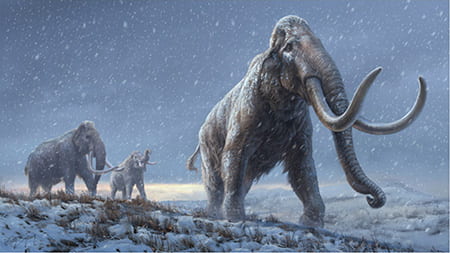Analysis of ancient DNA sequences recovered from mammoth teeth reveal North American mammoths were descended from two earlier mammoth lineages
February 17, 2021 | Tim Stephens | UCSC
An international team of scientists has sequenced DNA recovered from mammoth remains as old as 1.2 million years. The analyses show that the Columbian mammoth that inhabited North America during the last ice age was a hybrid between the woolly mammoth and a previously unknown genetic lineage of mammoth.
The study, led by researchers at the Centre for Palaeogenetics in Stockholm and published February 17 in Nature, also provides new insights into when and how fast mammoths became adapted to cold climate.
Coauthor Beth Shapiro, professor of ecology and evolutionary biology at UC Santa Cruz, said the results “push back pretty substantially what we’d come to think of as the oldest possible ancient DNA.” The previous record was DNA from a 750,000-year-old horse, which Shapiro’s team analyzed in 2013.
In the new study, researchers were able to analyze the genomes from three ancient mammoths, using DNA recovered from mammoth teeth that had been buried in the Siberian permafrost for 0.7 to 1.2 million years. Around one million years ago there were no woolly or Columbian mammoths, as they had not yet evolved. This was the time of their predecessor, the ancient steppe mammoth.
This is the first time that DNA has been sequenced and authenticated from million-year-old specimens, and extracting the DNA from the samples was challenging. The scientists found that only minute amounts of DNA remained in the samples and that the DNA was degraded into very small fragments.


